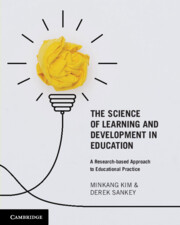Refine search
Actions for selected content:
37555 results in Cambridge Textbooks
4 - Barter and Commodity Money
- from Part I - Money
-
- Book:
- Modeling Monetary Economies
- Published online:
- 17 June 2022
- Print publication:
- 02 June 2022, pp 56-72
-
- Chapter
- Export citation
18 - The Effect of the National Debt on Capital and Savings
- from Part III - Government Policy
-
- Book:
- Modeling Monetary Economies
- Published online:
- 17 June 2022
- Print publication:
- 02 June 2022, pp 341-359
-
- Chapter
- Export citation
5 - Law, Politics and the Nature of the UK Constitution
- from Part I - Constitutional Regulation in the Absence of a Codified Constitution
-
- Book:
- Constitutional and Administrative Law
- Published online:
- 19 May 2022
- Print publication:
- 02 June 2022, pp 116-142
-
- Chapter
- Export citation
18 - Freedom of Information
- from Part V - Accountability (I): Scrutiny, Openness and Good Administration
-
- Book:
- Constitutional and Administrative Law
- Published online:
- 19 May 2022
- Print publication:
- 02 June 2022, pp 556-578
-
- Chapter
- Export citation
Part III - Government Policy
-
- Book:
- Modeling Monetary Economies
- Published online:
- 17 June 2022
- Print publication:
- 02 June 2022, pp 303-380
-
- Chapter
- Export citation
Part III - Central Government in the United Kingdom
-
- Book:
- Constitutional and Administrative Law
- Published online:
- 19 May 2022
- Print publication:
- 02 June 2022, pp 313-432
-
- Chapter
- Export citation
9 - Principles of Political and Parliamentary Accountability
- from Part II - The Theory and Practice of the UK Constitution
-
- Book:
- Constitutional and Administrative Law
- Published online:
- 19 May 2022
- Print publication:
- 02 June 2022, pp 287-312
-
- Chapter
- Export citation
7 - The Rule of Law
- from Part II - The Theory and Practice of the UK Constitution
-
- Book:
- Constitutional and Administrative Law
- Published online:
- 19 May 2022
- Print publication:
- 02 June 2022, pp 211-252
-
- Chapter
- Export citation
Part II - The Theory and Practice of the UK Constitution
-
- Book:
- Constitutional and Administrative Law
- Published online:
- 19 May 2022
- Print publication:
- 02 June 2022, pp 143-312
-
- Chapter
- Export citation
12 - Parliament (II): The House of Lords
- from Part III - Central Government in the United Kingdom
-
- Book:
- Constitutional and Administrative Law
- Published online:
- 19 May 2022
- Print publication:
- 02 June 2022, pp 387-412
-
- Chapter
- Export citation
Index
-
- Book:
- Modeling Monetary Economies
- Published online:
- 17 June 2022
- Print publication:
- 02 June 2022, pp 388-390
-
- Chapter
- Export citation
3 - A Simple Model of Money
- from Part I - Money
-
- Book:
- Modeling Monetary Economies
- Published online:
- 17 June 2022
- Print publication:
- 02 June 2022, pp 33-55
-
- Chapter
- Export citation
13 - Payment Systems
- from Part II - Capital and Banking
-
- Book:
- Modeling Monetary Economies
- Published online:
- 17 June 2022
- Print publication:
- 02 June 2022, pp 235-257
-
- Chapter
- Export citation
14 - The United Kingdom’s Devolution Arrangements
- from Part IV - Decentralised Government in the United Kingdom
-
- Book:
- Constitutional and Administrative Law
- Published online:
- 19 May 2022
- Print publication:
- 02 June 2022, pp 435-476
-
- Chapter
- Export citation
19 - Judicial Review of Administrative Action: Theory, Procedure and Remedies
- from Part VI - Accountability (II): The Courts
-
- Book:
- Constitutional and Administrative Law
- Published online:
- 19 May 2022
- Print publication:
- 02 June 2022, pp 581-621
-
- Chapter
- Export citation
16 - Parliamentary Scrutiny of Government
- from Part V - Accountability (I): Scrutiny, Openness and Good Administration
-
- Book:
- Constitutional and Administrative Law
- Published online:
- 19 May 2022
- Print publication:
- 02 June 2022, pp 519-537
-
- Chapter
- Export citation
22 - The Human Rights Act 1998
- from Part VI - Accountability (II): The Courts
-
- Book:
- Constitutional and Administrative Law
- Published online:
- 19 May 2022
- Print publication:
- 02 June 2022, pp 742-786
-
- Chapter
- Export citation
11 - Money Stock Fluctuations
- from Part II - Capital and Banking
-
- Book:
- Modeling Monetary Economies
- Published online:
- 17 June 2022
- Print publication:
- 02 June 2022, pp 199-217
-
- Chapter
- Export citation

Machine Learning
- A First Course for Engineers and Scientists
-
- Published online:
- 27 May 2022
- Print publication:
- 31 March 2022
-
- Textbook
- Export citation

The Science of Learning and Development in Education
- A Research-based Approach to Educational Practice
-
- Published online:
- 26 May 2022
- Print publication:
- 26 May 2022
-
- Textbook
- Export citation
